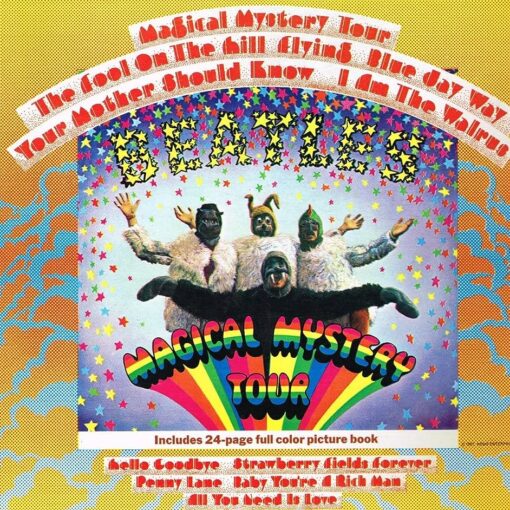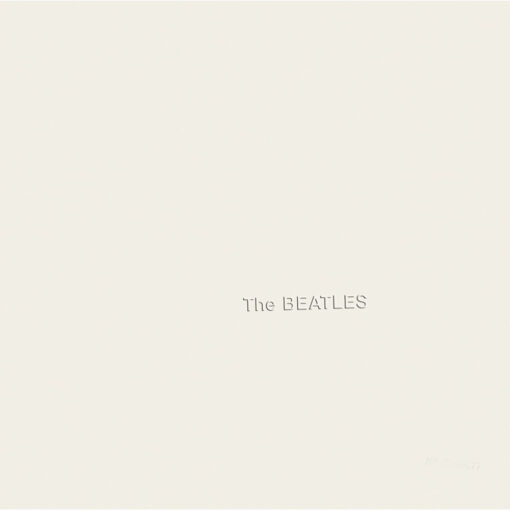- Published on 1968
- Author: Lennon/McCartney
- Track 11 on “The Beatles – White Album“
PAUL 1968: “It’s simple in concept because you couldn’t think of anything else to put on it. Maybe on ‘Pepper’ we would have sort of worked on it until we could find some way to put violins or trumpets in there. But I don’t think it needs it, this one. You know, it’s just… There’s nothing to the song. It is just one of those ‘pick it and sing it’ and that’s it. The only point where we were thinking of putting anything on it is where it comes back in the end…. sort of stops and comes back in… but instead of putting any backing on it, we put a blackbird on it. So there’s a blackbird singing at the very end. And somebody said it was a thrush, but I think it’s a blackbird!”
JOHN 1980: “I gave him (Paul) a line on that one.”
PAUL circa-1994: “The original inspiration was from a well-known piece by Bach, which I never know the title of, which George and I had learned to play at an early age– he better than me actually. Part of its structure is a particular harmonic thing between the melody and the bass line which intrigued me… I developed the melody based on the Bach piece and took it somewhere else, took it to another level, then I just fitted words to it. I had in my mind a black woman, rather than a bird. Those were the days of the civil-rights movement, which all of us cared passionately about. So this was really a song from me to a black woman, experiencing these problems in the states… ‘Let me encourage you to keep trying, to keep your faith, there is hope.’ As is often the case with my things, a veiling took place. So, rather than say ‘Black woman living in Little Rock’ and be very specific, she became a bird, became symbolic, so you could apply it to your particular problem.”
About “Blackbird”
“Blackbird” was released on November 22, 1968, as part of The Beatles’ self-titled double album, widely known as “The White Album“. The song is primarily written by Paul McCartney, although it is credited to the songwriting partnership of Lennon/McCartney. Recorded at Abbey Road Studios in London, the sessions for “Blackbird” took place on June 11 and 14, 1968. The song has a duration of approximately 2 minutes and 18 seconds.
Stylistically, “Blackbird” is a primarily acoustic song. It is often described as a folk or acoustic ballad and is characterized by its simple, fingerpicked guitar arrangement. The lyrics carry a message of hope, freedom, and overcoming adversity, with the blackbird in the song interpreted as a symbol of resilience and breaking free from constraints. Paul McCartney has mentioned that the song was inspired by the civil rights movement in the United States during the 1960s, and it was also influenced by the work of folk singer-songwriters like Bob Dylan. Musically, the song features McCartney’s solo vocals accompanied by his acoustic guitar playing, with no additional instruments in the original.
“Blackbird” is widely regarded as one of The Beatles’ most beautiful and enduring compositions. It has been covered by numerous artists and is considered a classic in the realm of acoustic and folk-inspired music. The song features a distinctive bird-like whistle at the end, which McCartney performed himself. Paul McCartney has continued to perform “Blackbird” throughout his solo career, and it remains a staple in his concert repertoire.
“Blackbird” stands as a testament to Paul McCartney’s songwriting prowess and The Beatles’ ability to create music that resonates with audiences across generations. Its message of hope and transformation continues to inspire listeners around the world.
Meaning of “Blackbird”
The lyrics of “Blackbird” by The Beatles are often interpreted as a message of hope, freedom, and resilience in the face of adversity.
The line “Blackbird singing in the dead of night” sets the scene with an image of a blackbird singing, even in the darkest hours. The blackbird is often seen as a symbol of transformation and new beginnings.
“Take these broken wings and learn to fly“: this metaphor suggests overcoming difficulties or challenges (“broken wings”) and learning to embrace one’s own potential and freedom (“learn to fly”).
“All your life, you were only waiting for this moment to arise” conveys a sense of anticipation and suggests that throughout one’s life, there may have been a longing for a specific transformative moment or opportunity.
Overall, the song’s lyrics are often seen as encouraging personal growth, resilience, and the pursuit of freedom. It’s important to note that while these interpretations are widely accepted, the beauty of music lies in its subjective nature, and listeners may find their own meanings and connections within the lyrics.
Paul McCartney explains “Blackbird”
Paul McCartney explains how “Blackbird” came about and his fingerpicking style used in the song during a TV show in December 2005.
Personnel
- Paul McCartney – lead vocal, acoustic guitar, tape loops, foot tapping
How to play “Blackbird” the same way as Paul McCartney
“Blackbird” is known for its intricate fingerpicking pattern and memorable melody. While it’s not particularly challenging to replicate, this style isn’t the most prevalent in pop or rock music. With its movement up the neck, incorporating open strings alongside higher fretted notes, it evokes something akin to “Lagrima” by the Spanish classical guitarist and composer Francisco Tarrega from the late 1800s. What it’s intriguing about “Blackbird” from a guitar perspective, is the interplay between fretted and open notes.
Although there’s a common belief that Donovan taught McCartney the picking style for “Blackbird,” in an interview Donovan shared a different version of events. He mentioned that he was actually teaching Lennon the Travis picking technique, which was later used in songs like “Dear Prudence” and “Julia.” McCartney briefly observed the lesson but didn’t show much interest in adopting that style. Instead, he ventured off and developed his own fingerpicking approach, using “Blackbird” as an example. The picking style in “Blackbird” is quite distinct from Donovan’s typical Travis picking.
McCartney has stated that the picking style he employed in this song was reminiscent of his and George’s early Beatles days when they attempted an acoustic guitar rendition of a section from Bach’s “Bourree in E minor.” So, he had been using this thumb and finger “claw hammer” technique well before “Blackbird” came about.
The following video features a guitar cover of “Blackbird” with tab:
“Blackbird” karaoke
For those who want to try singing “Blackbird” over a backing track, here is the karaoke version of the song:



